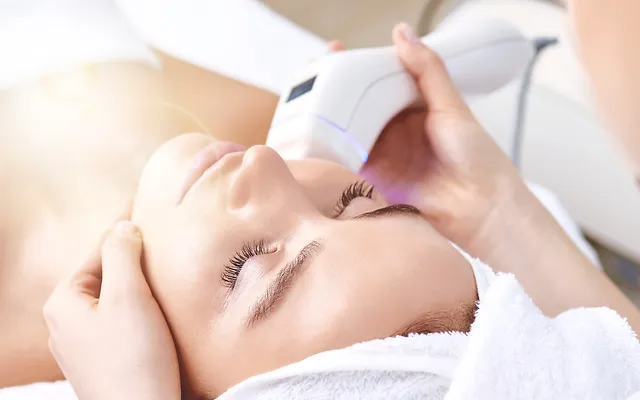Levulan PhotoDynamic Therapy
What to Know About Levulan PhotoDynamic Therapy
What is Photodynamic Therapy?
Photodynamic Therapy is a specialized treatment used to kill precancerous cells for patients diagnosed with actinic keratoses. Like other types of Photodynamic Therapy — which is also known as PDT, phototherapy, photoradiation therapy, and photochemotherapy — Photodynamic Therapy uses a combination of special drugs and light to treat cancer.

During PDT treatments, the dermatologist first applies the specialized drugs, also called photosensitizing agents. Depending on the affected area of the body, they will apply the photosensitizing agent through either a vein or directly to the skin. After a certain amount of time, the drug is then absorbed by the cancer cells. Once this occurs, the dermatologist then applies a specific kind of light to the affected area. As the light reaches the cancerous area, it reacts with the absorbed drug and creates a chemical that destroys the targeted cells. Photodynamic therapy can also kill vessels that supply blood to the cancerous cells and encourage the immune system to destroy them.
When using Photodynamic Therapy, dermatologists apply aminolevulinic acid (ALA), a topical drug more commonly known by its brand name. Since it’s used to treat actinic keratoses, a skin condition that can become skin cancer, the photosensitizing agent is applied directly to the skin. This particular therapy is only used for patients experiencing actinic keratoses on the face or scalp. During treatment, doctors use a special blue light to activate the drug, rather than the laser light used in other PDTs. The number of treatments used depends on the strength of the treatment and the treatment plan prescribed by your doctor. Initial treatments usually occur in two to five week intervals and additional treatments may be performed as needed in the future.
What Conditions Does it Treat?
As mentioned above, Photodynamic Therapy is mainly used to treat actinic keratoses, removing sun-damaged cells before they become cancerous. This treatment can also improve blotchy skin, minimize oil glands, reduce fine lines and wrinkles, shrink pores, and soothe acne scars. Because of these benefits, Photodynamic Therapy is also used to treat rosacea, acne vulgaris, Bowen’s disease, and superficial squamous and basal cell carcinomas.
What are the Benefits of Photodynamic Therapy?
- Photodynamic therapy is completely non-invasive, limiting the inconvenience and recovery for patients
- It can be precisely targeted to kill precancerous cells without affecting the surrounding cells and tissue
- It’s far less damaging than radiation or chemotherapy, allowing doctors to repeatedly treat the same area without risk
- It has no long-term side effects and leaves little to no scarring
What Risks are Associated with this Treatment?
Because Photodynamic Therapy uses photosensitizers, this treatment may cause light sensitivity during and after treatment. If this problem occurs, patients may have to take certain precautions while they are treated. If patients have internal defibrillators, pacemakers, certain blood diseases, have been taking isotretinoin within the past three months, or are pregnant, they should not use this treatment. Patients taking blood thinners or aspirin may also experience bruising that can take up to a few weeks to resolve.
Levulan® is a prescription medicine used on the skin with blue light treatment (BLU-U® Blue Light Photodynamic Therapy or PDT) for the treatment of minimally to moderately thick actinic keratoses (AK’s) of the face, scalp, or upper arms.
